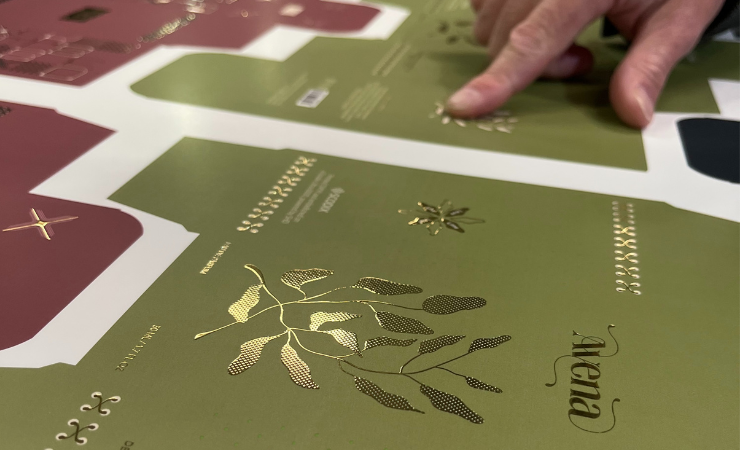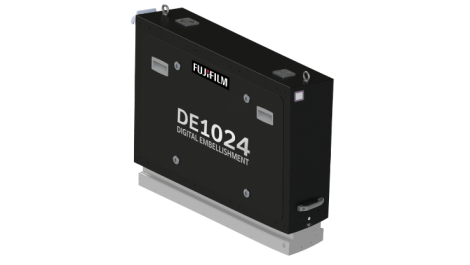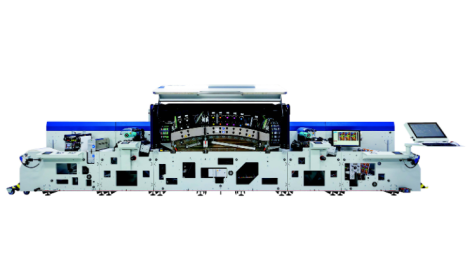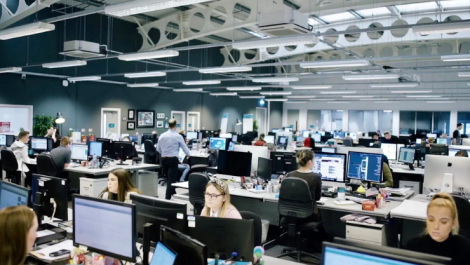Scodix digital print enhancement technology is proving to be transformative for the Dublin-based print company, as David Pittman details.
Founded almost four decades ago, McGowans has evolved from a city centre repro and copy shop into a technology-led manufacturing business.
This has been supported by investment in class-leading printing technologies. A Canon colour copier brought the company forward in its early days, before investment in an A1 bubblejet copier and the growth of Apple Mac to output directly to copiers allowed the company to expand its customer base and revenue potential. Benny Landa and his vision of digital print then helped McGowans realise the potential in outputting directly to a digital press. Other investments of note down the years include an Agfa :M-Press high-speed flatbed printer and an EFI Nozomi C18000 single-pass UV LED corrugated printer. More than 25 machines are now in operation at the McGowans site in Dublin.
The company was also one of the first to install Scodix’s digital print enhancement technology back in the early 2010s, with the world’s third – and Ireland’s first – S74. As well as increasing its finishing and embellishment capabilities, this served to attract work onto McGowans’ HP Indigo digital presses. So successful was this initial B2 embellishment system, that upon seeing Scodix’s latest generation of B1 systems in the iron, company CEO Mal McGowan was immediately drawn to its potential to help the business evolve its output, both in terms of format and applications. This has all led to the installation of a Scodix Ultra 6000. This is one of the supplier’s two models specifically designed with the packaging market in mind.
For McGowans, this has opened the printer up to a greater range of work that it wasn’t previously in the position to pitch for.
Speculate and accumulate
By and large, this is in the folding carton market. Folding cartons are a recent addition to the McGowans product mix, facilitated by the installation of another B1 digital machine – a Landa S10 sheet-fed nanographic printing press – alongside a Highcon Beam 2 digital cutting and creasing system. On the company’s factory floor, the new Scodix is nestled between these two machines.
‘We’re fairly unique in that we don’t buy equipment as we need it. We buy to grow into new markets. Before we had the Landa S10, for example, we were not in folding cartons at all. Rather, we purchased that press to develop a folding carton business. The Highcon system gave this a boost as it sped up the whole production cycle. Adding in the Scodix has opened us up to even more of the market. When we first saw the B1 Scodix, we knew immediately what it could do for the business and help grow our new folding carton division.’
He examples, ‘There is a specific national retailer in Ireland with an own-brand line that uses a small amount of foiling on its packaging. Without the Scodix, we would not have got them through the door as digital alone was not enough of a draw. With it, we could and now their packaging is printed on the Landa and foiled. That just goes to show the power and potential in this technology.
‘Will all our packaging work feature foiling? Only 25-30% will in reality but that helps bring the other 70-75% into the business. For us, that is the magic of Scodix.’
Transformative technology
Whilst McGowans has identified specific commercials benefits in introducing Scodix’s B1 digital embellishment platform for folding cartons, more general gains are also to be made, namely ‘impressive data-driven sustainability benefits and economic advantages’, as Mr McGowan states.
These are two of the three pillars that Mark Nixon, Scodix’s global vice president of sales and marketing, notes as driving the adoption of the company’s technology. More than 400 Scodix presses are now installed globally, with numerous customers operating multiple presses.
He highlights quicker make-ready times, the need for no tooling and reduced operator complexity as economic benefits of note for converters, with the technology’s sustainability credentials perhaps best exampled by independent testing of emissions and resource consumption, which showed that when compared to analogue, the Scodix process is seven times more efficient on a B1 sheet. Alongside sustainability and the economics, the third pillar – productivity – covers the ability of users to personalise and serialise, customise and respond to market changes, diversify their SKU portfolio and update their printed collateral quickly and efficiently, all delivered just-in-time without the requirement to keep large amounts of stock on hold.
‘If you’re going to digitise a process, digitise the longest,’ opines Mr Nixon. ‘Foiling and spot UV have always been the longest, often requiring multiple steps and long set-up times. The Scodix process requires only a few steps and the machine can be ready in a matter of minutes. This allows our customers to respond to their customers, who in turn benefit from a cost-efficient and high-quality production tool.’
Developments such as SHD also benefit converters and their customers alike. This algorithm-controlled digital printing process is claimed to achieve ‘high accuracy and quality precision’ of complicated detailing for foiling and spot embellishments. For example, Scodix Foil is enhanced by SHD with precision and accuracy to achieve fine delicate details in designs and in micro fonts, offering customers increased flexibility and greater choice as to how they create impact for their brands. The Ultra 6000 powered by SHD, as installed at McGowans, is directly targeted at the packaging sector by being able to handle the thicker substrates required for packaging applications – up to 2mm – and incorporating industrial pallet feeders and stackers. The Ultra 6000 also offers a larger format.
Scodix’s decision to develop application-specific polymers that are optimally created to work with specific print processes and their consumables – from HP’s ElectroInks and Landa’s NanoInk to xerographic toners and offset inks – further benefits customers.
‘We’re not trying to defy physics with one type of chemistry, rather create technology that not only works for our customers today but futureproofs their investment.
‘Our systems will never become redundant as they are multi-polymer, so can evolve as print and consumables evolve and always give the best result, regardless of the process.’
This feature article was first published in issue 4 (July) 2023 of Digital Labels & Packaging; register here to receive all future issues of the magazine






